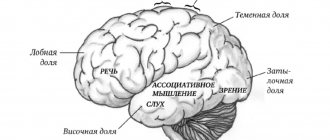Basics of image formation
Do you remember the well-known folk wisdom that, as a rule, you meet a person by his clothes? But this is really true: the first impression that is created about you in the eyes of other people plays a fairly important role for further communication.
That is why knowledgeable people pay so much attention to creating their own image - a kind of business card that helps the image of a particular person to be correctly perceived by his interlocutors (see “Business image of a man and a woman”).
In fact, image is a very interesting “thing”! This is a certain visual image, even a kind of picture, which is created specifically for a specific purpose. It often happens that the image is very different from the real, real personality.
In the modern world, the issue of properly forming an image is very acute, and all because the appearance that we demonstrate to others has a decisive impact on other people’s opinions of us. A competent approach to this image is a decisive factor in the success of many events.
The problem of creating the right image is especially pressing for people who are engaged in a certain type of activity, for example, famous politicians, high-ranking executives, directors of organizations and companies, and various businessmen.
The greater the number of people with whom a particular person has to communicate and conduct certain affairs, the greater the level of tasks assigned to him, the more important the impression that is formed about him becomes. But in essence, image is really important for any person.
Components of image
Since image is a broad and quite multifaceted concept, it is necessary to dwell on all its components.
Image: concept and types
Today there are many definitions of image. If we generalize different points of view, we can characterize an image as a specially created image of an object, used for certain purposes. Depending on the object, the image is divided into types.
Types of image:
- person's image;
- image of the organization;
- image of the territory;
- image of the subject.
In fact, an external image can be created for any object, you just need to understand for what purpose this is being done. At its core, an image represents a short amount of well-chosen, most beneficial information that needs to be conveyed to a person.
Symbolism of individual image in folk memory
Symbolism in the image allows a person to become quickly recognizable. There are many examples of people who are imprinted in the memory of peoples and cultures thanks to one or another symbol:
- J.V. Stalin. The leader could be easily recognized by his smoking pipe.
- Adolf Gitler. The symbol with which the villain was remembered by millions of people was his aggressive mustache and bangs, laid on an unusual side.
- Fidel Castro . The leader of the Cuban revolution always wore a military uniform.
- Yulia Timoshenko. The politician is famous for her braid. Which, in turn, is a symbol of Lesya Ukrainka, the great Ukrainian poetess.
- Kurban Berdyev. At every match, the coach appears with a rosary in his hands.
In other words, an image is always a certain image that has a symbolic structure; it is “something greater” than the person himself. If you look from the position of semiotics - the science of symbols and signs - it is directly related to the values of humanity.
The need to create an image
The types of image and the functions that it performs should help a person interact with the world around him most effectively. The functions of image include:
- the opportunity to demonstrate the best qualities, individuality, and moral values of a person;
- the influence of image on a person’s psychological comfort (increases self-confidence and one’s capabilities, has a positive effect on a person’s communication abilities);
- opportunity to demonstrate business qualities and professional competence;
- the ability to smooth out existing shortcomings by refocusing attention on the advantages;
- the opportunity to attract attention to your person and make the right impression;
- the ability to interact with different categories of people, ensuring greater efficiency in the business sphere.
When creating an image, it is important to use reliable information about a person and his real qualities, because the deception will quickly be revealed and the person will ruin his reputation. An image that is far from a person’s real personality is very difficult to maintain and broadcast to others.
The significance of the discoveries obtained
Image is a powerful tool of influence, which in the process of communication has a dramatic impact on the perception of the message. This phenomenon itself is the result of social interaction, without which there can be no talk of any image. It always has a symbolic nature, since it is thanks to signs and symbols that it is possible to assign an individual with a certain image to a particular social group. The sign has the function of replacing certain objects or phenomena. Thus, an individual image is a way to tell the audience that its bearer is the owner of certain qualities and properties.
Personal image
Each person has an individuality that is unique to him. It consists of a set of certain qualities, temperament and character of a person, his worldview and moral principles. Types of human image:
- Personal.
- Business.
Using various individual qualities of a person, various types of personal image are created. For example, in order to fit into a new team, a person creates a reputation for himself as a “simple guy” or “the soul of the company,” etc., depending on the qualities that he possesses. Personal image consists of certain characteristics that help build the desired image of a person. They take into account the various channels of information perception that a person uses.
Characteristics of personal image:
- Habitar (person’s appearance): clothing style, hairstyle, makeup, manicure, perfume, neatness and grooming. A well-groomed, well-dressed person is subconsciously perceived as worthy of trust and attention.
- Mimic: facial expressions, eye expression, smile, mobility and artistry of the face. The ability to express emotions through facial expressions makes a favorable impression on the interlocutor.
- Verbal: sound of voice (timbre, intonation), semantic content of speech, expressiveness of speech, literacy and accessibility of presentation. A person who masters the art of communication is able to influence and make the necessary contacts.
- Kinetic: human movements, gestures he uses, gait, posture. The human body transmits its internal state through movements and postures.
- Material: property, things surrounding a person. A person’s house, the car he drives, the things he uses can tell a lot about a person.
- Mental: beliefs, worldview, morals, principles, stereotypes. A person’s worldview and beliefs make him interesting to others or, conversely, unpleasant.
- Background: what friends, colleagues, and the media say about a person. A person's reputation can play into a person's hands or against him. Therefore, the image largely works for the reputation. And when the necessary reputation is created, it works for the image.
- Internet: activity on social networks, what a person writes, what photos he posts on the Internet. The Internet has become an integral part of human life, so it is an excellent source of information about a person.
What else you need to know about image formation
Like the first impression of a person, his image is formed over a very short period of time. To change it later, you will need to try a lot. Therefore, it is better to always be ready to demonstrate your image.
The image that a person himself creates either helps him strengthen and develop success in interpersonal relationships, or slows him down in this. Every effort must be made to ensure that it is not random and spontaneous, but carefully thought out and conscious.
And finally, another important component of a person’s image is to strive to really be, and not just seem. This means that you need to try to master all of the above elements of your image, and not just demonstrate them.
Features of the image
When creating a personal image, you need to take into account some other characteristics of a person. In addition to personal qualities and abilities, there are also important factors that influence the success of a reputation: age, gender, ethnicity, social, regional.
It is necessary to understand that the image of a man and a woman will differ according to their gender. A businessman and a businesswoman have the same tasks, but their image will be different. Age characteristics, ethnicity, region of residence - all this will influence a person’s image. It is especially necessary to highlight the social factor - this is belonging to different social strata of the population. This is also an important factor taken into account when creating an image.
Image of a business person: appearance, behavior
Business image has its own characteristics, since it is associated exclusively with a person’s business activities. Therefore, a person’s appearance and behavior will be aimed at achieving success in professional activities. A business image will be created with the aim of demonstrating the business skills and qualities of an individual, her competence and prospects.
There are several types of business image:
- mirror (reflects the view from the side);
- current (reflects a person’s idea of himself);
- desired (reflects what a person strives for);
- corporate (reflects the image of the organization as a whole);
- charismatic (reflects the image of a leader, manager).
In the business sphere, a person is given the opportunity to demonstrate all his capabilities and talents. However, this is a competitive field, so a person striving to succeed must constantly develop and improve his abilities. A business image does not tolerate falsehood and ignorance; it requires knowledge and adherence to business etiquette and ethics of business communication.
Self-presentation
One of the components of a successful image is self-presentation. This is the ability to show your abilities, present yourself, attract attention and interest people. Not every person has these qualities, but they can be developed in oneself. Of course, not all areas of human activity require self-presentation, but it will fit well into various types of image. Basically, it is necessary for people in creative professions, especially in show business, as well as in politics.
What is imageology?
Imageology is the science of image formation, designed to help make exactly the impression that was planned. Imageology was formed in the Western community in the 60s of the 20th century; it appeared in the Russian-speaking space 20 years later. At first she was engaged in creating images of politicians, later in science the areas of personal, pedagogical, medical, managerial, personnel, corporate, and legal imageology emerged.
Although imageology was formed relatively recently, the basic elements of style and personal image appeared in Ancient Egypt . The image of the pharaoh combined the characteristics of a person and a deity and was closely associated with the image of the state. The appearance of the pharaoh personified the omnipotence of the supreme leader, and later became a prototype of government. This practice spread to the countries of Mesopotamia, Ancient China, and Ancient Persia.
In Ancient Rome and Ancient Greece, more attention was paid to the image of the state. Later in Medieval Europe, a religious and secular aspect was added to the image of the ruler. Increased demands were placed on knights or nobles: they had to be able to read poetry, wield a sword masterfully, stay in the saddle, and serve their master. During the Renaissance, ordinary people began to understand the importance of a beautiful image. The reputation of families, individual households, and working dynasties is formed.
In modern times , with the development of production, the general image of the individual bifurcated into external and internal. On the one hand, a person had to fit into society, on the other, to develop his inner qualities. In Russia, personal image has become the main component of a businessman. The external image of the merchant (beard, solidity, physical strength) and his internal appearance (honesty, decency, faithfulness to his word) were formed. When paper contracts did not yet exist, the “merchant’s word” had great power when concluding transactions.
Today, a multi-stage strategy for building a personal brand is being developed by politicians, actors, television presenters, businessmen, and bloggers.
Image for the corporation
Any corporation needs a successful image. Its popularity and demand in the market will depend on it. Corporate image reflects the perception of an organization by various public groups. They purposefully form a holistic image of the corporation based on information about its activities.
Various types of corporate image, carefully selected, can provide organizations with success in the business sphere, demand among clients, fame and influence among other companies, as well as competitiveness.
The corporation's image includes:
- corporate philosophy;
- history of the corporation;
- appearance;
- famous employees and staff;
- environment;
- relations with society;
- general background.
Image of the organization
Various types of image of an organization are united by a combination of internal, external and business qualities of the company. They are made up of eight components:
- Image of a product (service): people’s ideas about the unique characteristics inherent in a product.
- Image of product consumers: demonstrates the status and character of consumers.
- Internal image of the organization: reflects the culture of the organization.
- The image of the founder and main leaders of the organization: is characterized by ideas about the personal qualities, abilities and intentions of the founder or leader, formed on the basis of perceptible parameters: behavior, actions, appearance and activities of the leader.
- Personnel image: reflects the image of the personnel with their characteristic features.
- Visual image of the organization: reflects information about the office building, its interior, the appearance of the staff, and corporate symbols.
- Social image of the organization: characterizes the organization’s participation in the social and cultural life of society, the organization of environmental and social programs.
- Business image of the organization: characterizes the organization as a subject of a certain activity, having a business reputation, business activity and the degree of development of innovative technologies.
Activity as a component of image
The image of an activity includes the analysis of a specific type of activity in order to create the most effective image. Such components as the focus of the activity, the knowledge and skills necessary for its implementation, the perceptions and requirements of society for a specific type of activity are taken into account. By type of activity, the following types of image can be distinguished:
- image of the organization (PR technologies, reputation);
- personal image (divided into the image of specialists, politicians and show business);
- territorial image (housing, recreation areas, areas of economic activity);
- social image (promotion of various ideas, ideologies).
Image of the territory
Image also exists for various territories; it includes a combination of rational thoughts and emotional impressions that arise on the basis of knowledge, rumors and experience relating to all the characteristic features of a territory that are available for perception and evaluation.
Types of territory image:
- formal (consists of an assessment of natural and produced resources, the size of GNP per inhabitant and the amount of human resources inherent in the territory);
- everyday (formed by local leaders, rumors and the media, and therefore is considered unreliable and unsystematic).
In today's fast-paced world, information is of paramount importance. Anyone who knows how to use information technology to their advantage will always be successful and in demand in society. Image is directly related to information technology, and therefore is in great demand, especially in business and politics.
Cloth
Clothing is, first of all, your preferences in silhouette (do you like a strict or loose fit), style (business, sports, etc.), color scheme, do you follow fashion or are guided by your taste, etc. And all of this actually immediately characterizes us.
Agree, a person who loves loose clothes is different from a person who prefers a business style. “The suit changes the man,” the French like to say.
Frequently asked question: how to dress for an interview? Correct answer: Depending on the position you are applying for and the cost, your clothing and accessories should be equal to the salary level you would like to receive. Your image should say: “I am successful and, as a professional, I know my worth.”











